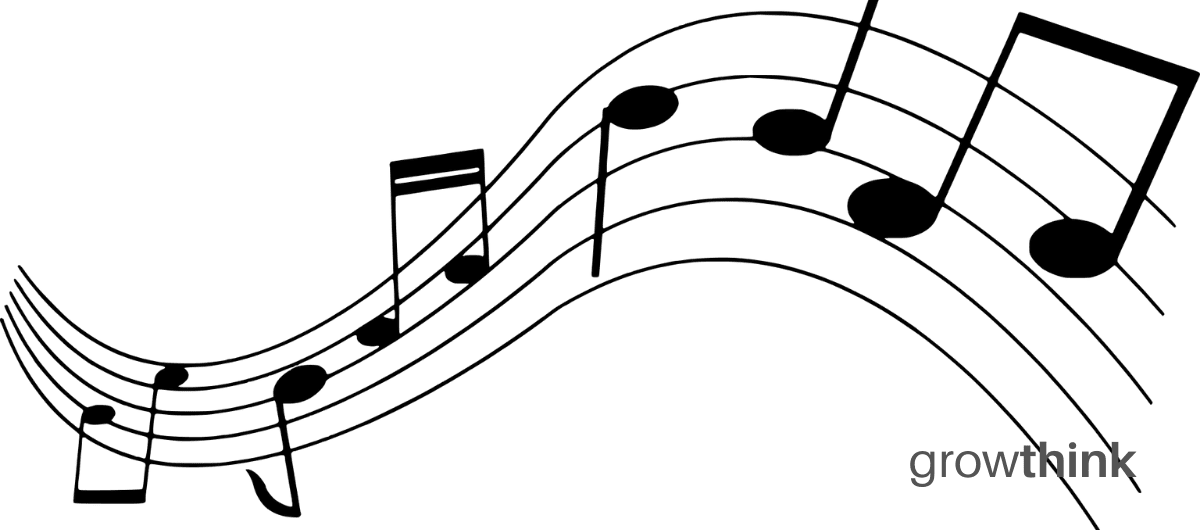
Over the past 20+ years, we have helped over 5,000 entrepreneurs and business owners create business plans to start and grow their music businesses. On this page, we will first give you some background information with regards to the importance of business planning. We will then go through a music business plan template step-by-step so you can create your plan today.
What Is a Music Business Plan?
A music business plan provides a snapshot of your music business as it stands today, and lays out your growth plan for the next five years. It explains your business goals and your strategy for reaching them. It also includes market research to support your plans.
Why You Need a Music Business Plan
If you’re looking to start a music business or grow your existing business you need a music business plan. A business plan will help you attract investors and raise money, if needed, and plan out the growth of your music business in order to improve your chances of success. Your music business plan is a living document that should be updated annually as your company grows and changes.
Source of Funding for Music Businesses
With regards to funding, the main sources of funding for a music business are bank loans and angel investors. With regards to bank loans, banks will want to review your music business plan and gain confidence that you will be able to repay your loan and interest. To acquire this confidence, the loan officer will not only want to confirm that your financials are reasonable, but they will want to see a professional music business plan. Such a plan will give them the confidence that you can successfully and professionally operate a music business.
The second most common form of funding for a music business is angel investors. Angel investors are wealthy individuals who will write you a check. They will either take equity in return for their funding or, like a bank, they will give you a loan. Venture capitalists will not fund a music business.
Finish Your Business Plan Today!
If you’d like to quickly and easily complete your business plan, download Growthink’s Ultimate Business Plan Template and complete your plan and financial model in hours.
How To Write a Music Business Plan
Your music business plan should include 10 sections as follows:
Executive Summary
Your executive summary provides an introduction to your music business plan, but it is normally the last section you write because it provides a summary of each key section of your plan.
The goal of your executive summary is to quickly engage the reader. Explain to them the type of music business you are operating and the status; for example, are you a startup, do you have a music business that you would like to grow, or are you operating a chain of music businesses?
Next, provide an overview of each of the subsequent sections of your plan. For example, give a brief overview of the industry. Discuss the type of music business you are operating. Detail your direct competitors. Give an overview of your target audience. Provide a snapshot of your marketing plan. Identify the key members of your team, and offer an overview of your financial plan.
Company Analysis
In your company analysis, you will detail the type of music business you are operating.
For example, you might operate one of the following types:
- Recorded Music – This type of music business sells music that has been recorded in a studio.
- Music Licensing – This type of music business licenses music for films, TV shows, video games, advertisements, online videos, etc.
- Live Music – This type of music business sells tickets to live concerts and tours. They might also operate a school that teaches people how to become successful musicians, or they might sell memorabilia such as T-shirts and posters.
- Music Publishing – This type of music business is in the rights business; they represent songwriters. If someone wants to use a song by a songwriter that is represented by the music publishing company, they need to get permission and then pay a royalty.
- Music Production – This type of music business provides a service for musicians and recording artists. They might produce and record an album and then provide marketing services such as radio promotion and public relations.
- Music Business Consulting – This type of business is in the business of providing advice to musicians on how to become successful. For example, they may offer consulting on how to promote your music and how to book gigs.
- Music Artist – This type of business operates as an individual musician or music group. For example, they might be solo artists, bands looking for a record deal, or groups of musicians hoping to become successful together.
- Music Education – This type of music business offers music lessons, either in-person or online.
- Retail Music Store – This type of music business sells instruments, sheet music, and other music-related items.
In addition to explaining the type of music business you operate, the Company Analysis section of your business plan needs to provide background on the business.
Include answers to questions such as:
- When and why did you start the business?
- What milestones have you achieved to date? Milestones could include sales goals you’ve reached, new store openings, etc.
- Your legal structure. Are you incorporated as an S-Corp? An LLC? A sole proprietorship? Explain your legal structure here.
Industry Analysis
In your industry analysis, you need to provide an overview of the music business.
While this may seem unnecessary, it serves multiple purposes.
First, researching the industry educates you. It helps you understand the market in which you are operating.
Secondly, market research can improve your strategy particularly if your research identifies market trends. For example, if there was a trend towards more people purchasing music online, you may want to focus your marketing efforts on digital platforms.
The third reason for market research is to prove to readers that you are an expert in your industry. By conducting the research and presenting it in your plan, you achieve just that.
The following questions should be answered in the industry analysis section of your music business plan:
- How big is the music business (in dollars)?
- Is the market declining or increasing?
- Who are the key competitors in the market?
- Who are the key suppliers in the market?
- What trends are affecting the industry?
- What is the industry’s growth forecast over the next 5 – 10 years?
- What is the relevant market size? That is, how big is the potential market for your music business. You can extrapolate such a figure by assessing the size of the market in the entire country and then applying that figure to your local population.
Customer Analysis
The customer analysis section of your music business plan must detail the customers you serve and/or expect to serve.
The following are examples of customer segments for a retail music store:
- Adult beginning guitar players
- Teenage/college-aged students who want to learn how to play the electric guitar and will commit time and money to do so
- Middle-aged adults who want to learn how to play acoustic guitars for their own enjoyment
- Vintage guitar enthusiasts who are looking for specific instruments that are considered rare or valuable.
The following are examples of customer segments for a music education business:
- Parents who want their children to have a well-rounded education and believe that music is an important part of that
- Children who want to learn to play an instrument because they enjoy music
- Adults who want to improve their skills at playing an instrument they already know how to play
As you can imagine, the customer segment(s) you choose will greatly depend on the type of music business you are operating. Clearly, baby boomers would want a different atmosphere, pricing, and product options, and would respond to different marketing promotions than millennials.
Try to break out your target customers in terms of their demographic and psychographic profiles. With regards to demographics, including a discussion of the ages, genders, locations, and income levels of the customers you seek to serve.
Psychographic profiles explain the wants and needs of your target customers. The more you can understand and define these needs, the better you will do in attracting and retaining your customers or clients.
Finish Your Music Industry Business Plan in 1 Day!
Don’t you wish there was a faster, easier way to finish your business plan?
With Growthink’s Ultimate Business Plan Template you can finish your plan in just 8 hours or less!
Click here to finish your Music Industry business plan today.
Competitive Analysis
Your competitive analysis should identify the indirect and direct competitors your business faces and then focus on the latter.
Direct competitors are other music businesses within the same niche.
Indirect competitors are other options that customers have to purchase from that aren’t direct competitors. This includes physical stores, online stores, and even locally owned retail shops that sell instruments.
Here are some examples of indirect competitors within the music education niche:
- Local music store selling instruments
- Online retailer selling musical instruments
- The public school system offering a music program to students in grades K-12 or college offering a music ed program as a minor.
You need to mention such competition to show you understand that not everyone in the market is your direct competitor. Furthermore, including a SWOT analysis of your business in this section will demonstrate how you plan to compete against them.
For each such competitor, provide an overview of their businesses and document their strengths and weaknesses. Unless you once worked at your competitors’ businesses, it will be impossible to know everything about them. But you should be able to find out key things about them such as:
- What types of customers do they serve?
- What products/services do they offer?
- What is their pricing (premium, low, etc.)?
- What are they good at?
- What are their weaknesses?
With regards to the last two questions, think about your answers from the customers’ perspective. And don’t be afraid to reach out to customers of your competitors and ask them what they like most and least about them.
The final part of your competitive analysis section is to document your areas of competitive advantage. For example:
- Will you provide superior services?
- Will you provide amenities that your competitors don’t offer?
- Will you make it easier or faster for customers to book your own studio?
- Will you provide better customer service?
- Will you offer better pricing?
Think about ways you will outperform your competition and document them in this section of your plan.
Marketing Plan
Traditionally, a marketing plan includes the four P’s: Product, Price, Place, and Promotion. For a music business plan, your marketing strategy and plan should include the following:
Product: in the product section, you should reiterate the type of music that you documented in your Company Analysis. Then, detail the specific products you will be offering. For example, in addition to selling instruments, you may also offer music lessons, CD recordings of the lessons, and other merchandise related to your business.
Price: Document the prices you will offer and how they compare to your competitors. Essentially in the product and price sub-sections, you are presenting the options you offer and their prices.
Place: Place refers to the location of your music business. Document your location and mention how the location will impact your success. For example, is your music business located in a commercial district with a lot of foot traffic? If not, will you offer delivery or online sales?
Promotions: the final part of your marketing plan is the promotions section. Here you will document how you will drive customers to your location(s). The following are some promotional methods you might consider:
- Advertising in local papers and magazines
- Reaching out to local bloggers and websites
- Partnerships with local organizations (e.g., partner with vendors to provide recording packages at a discount over a la carte services)
- Local radio stations advertising
- Banner ads at local music venues
- Social media advertising
Finish Your Business Plan Today!
If you’d like to quickly and easily complete your business plan, download Growthink’s Ultimate Business Plan Template and complete your plan and financial model in hours.
Operations Plan
While the earlier sections of your music business plan explained your goals, your operations plan describes how you will meet them. Your operations plan should have two distinct sections as follows.
Everyday short-term processes include all of the tasks involved in running your music business such as serving customers, cleaning, ordering supplies, and so on. This section should list the specific tasks that will need to be completed each day and who will be responsible for them.
Long-term goals are the milestones you hope to achieve. These could include the dates when you expect to serve your 25th customer, or when you hope to reach $X in sales. It could also be when you expect to hire your Xth employee or launch a new location.
Management Team
To demonstrate your music company’s ability to succeed as a business, a strong management team is essential. Highlight your key players’ backgrounds, emphasizing those skills and experiences that prove their ability to grow a music business.
Ideally, you and/or your team members have direct experience in the music business. If so, highlight this experience and expertise. But also highlight any experience that you think will help your business succeed.
If your team is lacking, consider assembling an advisory board. An advisory board would include 2 to 8 individuals who would act as mentors to your business. They would help answer questions and provide strategic guidance. If needed, look for advisory board members with experience in music and/or successfully running small businesses.
Financial Plan
Your financial plan should include your 5-year financial statement broken out both monthly or quarterly for the first year and then annually. Your financial statements include your income statement, balance sheet, and cash flow statements.
Income Statement: an income statement is more commonly called a Profit and Loss statement or P&L. It shows your revenues and then subtracts your costs to show whether you turned a profit or not.
In developing your income statement, you need to devise assumptions. For example, how many customers will you serve? How much does it cost to provide your service/product? As you can imagine, your choice of assumptions will greatly impact the financial forecasts for your business. As much as possible, conduct research to try to root your assumptions in reality.
Balance Sheets: While balance sheets include much information, to simplify them to the key items you need to know about, balance sheets show your assets and liabilities. For instance, if you spend $100,000 on building out your recording studio, that will not give you immediate profits. Rather it is an asset that will hopefully help you generate profits for years to come. Likewise, if a bank writes you a check for $100.000, you don’t need to pay it back immediately. Rather, that is a liability you will pay back over time.
Cash Flow Statement: Your cash flow statement will help determine how much money you need to start or grow your music business, and make sure you never run out of money. What most entrepreneurs and business owners don’t realize is that you can turn a profit but run out of money and go bankrupt.
In developing your Income Statement and Balance Sheets be sure to include several of the key costs needed in starting or growing a music business:
- Location build-out including design fees, construction, etc.
- Cost of equipment like studio gear, instruments, amps, inventory, etc.
- Payroll or salaries paid to staff
- Business insurance
- Taxes and permits
- Legal expenses
Appendix
Attach your full financial projections in the appendix of your plan along with any supporting documents that make your plan more compelling. For example, you might include your studio design blueprint or location lease.
Music Business Plan Summary
Putting together a business plan for your music business is a worthwhile endeavor. If you follow the template above, by the time you are done, you will truly be an expert. You will really understand the music business, your competition, and your potential customers. You will have developed a marketing plan and will really understand what it takes to launch and grow a successful music business.
Music Business Plan FAQs
What Is the Easiest Way to Complete My Music Industry Business Plan?
Growthink's Ultimate Business Plan Template allows you to quickly and easily complete your Music Industry Business Plan.
What is the Goal of a Business Plan's Executive Summary?
The goal of your Executive Summary is to quickly engage the reader. Explain to them the type of music business you are operating and the status; for example, are you a startup, do you have a music business that you would like to grow, or are you operating a chain of music businesses?
How Can I Generate Multiple Income Streams In My Music Business?
Whether you are a band, artist manager, recording producer, record label, or music store, if you can learn how to take the best advantage of both live and recorded revenue streams, you may be able to beat competitors at the music game. Your music business plan should describe your strategy of utilizing these two sides of the music industry.
Live Music
Live concert tickets can be sold for hundreds of dollars for popular groups, while up-and-comers may need to play for just tips at bars and small venues. However, there is a place for every type of musician on this spectrum, and almost all musicians maintain a live performance schedule even as they become successful recording artists. Live concerts offer an opportunity for the group or artist’s music to be exposed to new audiences in a visceral way, sometimes driving direct sales of CDs at the concert itself, and leading to word-of-mouth inspired sales down the road.
Live concerts can be a significant revenue stream for a successful music artist, but they must play at venues large enough to cover the fixed costs of production (marketing, ticket sales, equipment rental, and set-up, travel, wages, and venue rental) leaving a net profit. If venues are too small and cost too high, concerts may have to be considered just a promotion method for other revenue streams, like recording sales.
Recorded Music
The sales of CDs or mp3s of the group or artist’s music, on the other hand, leave much more potential for huge returns. The profitability of selling recorded music increases significantly as the number of CDs or mp3s increases, as the cost of producing and selling each additional CD (and especially mp3s) approaches zero. Recordings can also help promote concert sales to a certain extent, through the release of singles and promo CDs. This can be through giveaways and through radio promotion of those songs.
If each revenue stream is significant on its own and also reinforces the other, you can build an extremely profitable business over time.
Finish Your Music Industry Business Plan in 1 Day!
Don’t you wish there was a faster, easier way to finish your Music Industry business plan?
With Growthink’s Ultimate Business Plan Template you can finish your plan in just 8 hours or less!
Click here to finish your Music Industry business plan today.
OR, Let Us Develop Your Plan For You
Since 1999, Growthink has developed business plans for thousands of companies who have gone on to achieve tremendous success.
Click here to see how a Growthink business plan consultant can create your business plan for you.

 Business Plan Template & Guide for Small Businesses
Business Plan Template & Guide for Small Businesses How to Write a Great Business Plan
How to Write a Great Business Plan 100 Sample Business Plans
100 Sample Business Plans Finding a Business Plan Consultant
Finding a Business Plan Consultant The Perfect Business Plan Outline for a Great Plan
The Perfect Business Plan Outline for a Great Plan Record Label Business Plan Template
Record Label Business Plan Template